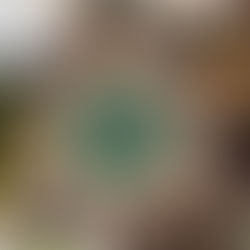What Is Seidr? How to Practice Norse Seidr Magic?
- Veronika
- Jun 19, 2021
- 6 min read
Updated: May 27, 2022
In this Blog post we are going to go back in time, to the information sources dated back to early Viking ages.
Thankfully, researchers were able to pick up some information from the manuscripts of literate vikings, Celtic and Saxon monks, as well as decryption of writings on Rune stones.
Viking Age: What Was Allowed & What Wasn't
Viking Age Magic was divided into two types: allowed and forbidden, or disapproved.
Allowed magic was, first and foremost, involving use of the Runes, carved for talisman or amulet purposes.
This also included Magical Staves (galdrastafir/galdur/galdr) but I will probably dedicate another post to this subject, as there is lots to talk about.
Related Posts: Viking Rune Tattoos: All You Need Know Before Getting One. Norse Runes & Icelandic Staves in Tattoos
Today, let's talk about "witches".
Seiðr or Norse Female Magic
The forbidden type of Norse magic is known as seiðr.
Let's first answer the common question: How is seiðr pronounced to ease your reading through this post.
Seiðr is pronounced as SAY-DR or sometimes ZAY-DR.
The true translation of the word seiðr is unknown but if we look at old-English or old High German words with the same root, it appears to be that the meaning variations are "tight rope" or a "trap."
And it makes sense as we know that in the rituals there was often used a distaff («seiðstafr» in Old Icelandic).
But there is another version for the translation of seiðr and that is "to boil" or "seethe."
This is due to the part of the seiðr magic that involved a drink brewed in a cauldron.
In simple words, seiðr is a ceremonial esoteric practice, similar to a shamanic trance.
By obtaining a deep state of trance, the soul could freely travel between the worlds.
One of the most important components of seiðr was divination and ability to foresee the events.
But seiðr was much more than that. With it, a Völva (seeress) could lift curses and put protection from negative energy and physical harm.
Odin, for example, reportedly could send illnesses on his enemies using seiðr, as well as kill.
Wait...
Didn't you say seiðr is a female magic?
I did and if you are God, perhaps you will also get an exception. More on Odin later.
Seiðr in Mythology
Seidr is often mentioned in Old Icelandic sagas.
The best example would be a poem "Song of the Valkyries" created in XI century.
Another good source is Lokasenna or "The Flyting of Loki", one of the songs of Poetic Edda.
In the poem, Loki mentions that Odin visited the Samsö island where he took part in the Seidr rituals.
"But, it is said, thou wentest
with tottering steps in Samsö,
and knocked at houses as a Vala. (Vala: seeress)
In likeness of a fortune teller,
thou wentest among people;
Now that, methinks, betokens a base nature."
With the help of Seidr Odin could find out people's future and destiny, as well as cursing his enemies causing illnesses, misfortunes and death. He would also take away they wits and strength and give it to those he deems worthy.
Here it also says that practicing Seidr for a man was considered to be shamefully. That is why this practice was mostly female.
Seidr was a practice of witches women called Völva or Seiðkona, Their Patroness was Frejya - the Goddess of love, war, lust and also magic. She was proficient in Seidr practice.
Here is a fragment from The Saga of Erik the Red (you can click the link to read the complete story).
"There was in the settlement the woman whose name was Thorbjorg. She was a prophetess (spae-queen), and was called Litilvolva (little sybil)...
...It was a custom of Thorbjorg, in the winter time, to make a circuit, and people invited her to their houses, especially those who had any curiosity about the season, or desired to know their fate...
In the story, there is even a detailed description of how the Völva looked like:
...she had a blue mantle over her, with strings for the neck, and it was inlaid with gems quite down to the skirt. On her neck she had glass beads. On her head she had a black hood of lambskin, lined with ermine. A (seidr) staff she had in her hand, with a knob thereon; it was ornamented with brass, and inlaid with gems round about the knob. Around her she wore a girdle of soft hair, and therein was a large skin-bag, in which she kept the talismans needful to her in her wisdom. She wore hairy calf-skin shoes on her feet, with long and strong-looking thongs to them, and great knobs of latten at the ends. On her hands she had gloves of ermine-skin, and they were white and hairy within...

There is also information on what Völva was fed:
...and now I must tell you what food was made ready for the spae-queen. There was prepared for her porridge of kid's milk, and hearts of all kinds of living creatures there found were cooked for her. She had a brazen spoon, and a knife with a handle of walrus-tusk, which was mounted with two rings of brass, and the point of it was broken off."
And, finally we can even read on the process of Seidr magic:
...And when the (next) day was far spent, the preparations were made for her which she required for the exercise of her enchantments. She begged them to bring to her those women who were acquainted with the lore...
She asked for help of women who knew the lore called Weird Song or "vardlokkur", which is basically used to "enchant" the spirits. And so it turned out that in the entire place these was only one woman named Gudrid.
...The spae-queen thanked her for the song. "Many spirits," said she, "have been present under its charm, and were pleased to listen to the song, who before would turn away from us, and grant us no such homage. And now are many things clear to me which before were hidden both from me and others. And I am able this to say, that the dearth will last no longer, the season improving as spring advances. The epidemic of fever which has long oppressed us will disappear quicker than we could have hoped..."
So, I will end here and the reason why I included these passages is to show you what Norse Magic of Seidr really looked like.
After the spirits came, Thorbjorg made prophecy to Gudrid to thank her for helping out and also made prophecies to other people.
In Seidr magic, aside from the lore, the following practices were used: combing, washing and shearing sheep, "smudging" the room, special mumbling and puffing, as well as making specific postures and hand spinning.
We can also see the word "hamfarir" used in relation to seiðr in various sagas. "Hamfarir" is translated as rage.
But it seems like it relates more to a war rage trance that a Völva would subject a warrior to before he goes into battle to increase their vitality and strength in a battle.
We can also conclude the following from this:
There is no mention of the Runes used in Seidr for magic or divination
The outcome of the practice ultimately was foreseeing future events.
Sidenote: if you want to learn more about the Runes and ger FREE pdfs with Elder Futhark Rune Meanings, go to this section of my website.
Back on the subject of men practicing Seidr magic...
Like I've mentioned before, for men, it was reprehensible to be practicing this type of Norse magic. There was a specific word used to describe this "ergi" which means something like perversion.
So, if a person was accused of "ergi" (even if they have really done nothing wrong...) they could easily lose their head (can get quite convenient, don't you think?).
Nevertheless. one of the sagas tells that the magical song «vardlokkur» was sang by fifteen women and fifteen men. Therefore, in some cases men did take part in seidr magic. Here, we can think of Odin again.
There was also a word used to describe such men - «seiðmað» in Old-Icelandic.
During the times of Christianization, there were many attempts to slander the practice of seiðr in order to completely get rid of it.
For example, there were unjustified statements that seidr was connected to sex magic and rituals. However, this is not confirmed in any sagas or stories that were found.
However, seidr remained to be a part of medieval Scandinavian culture. The Norse magic of seidr did not die out during Christianization time.
There is also a theory that the rituals practiced by Noaidi ( a shaman of Sami people in the Nordic countries) is, in reality, true seiðr.
Normans people ascribed the special abilities to predict the future, as well as practice witchcraft, specifically to the people of northern Scandinavia and Finns. Some Vikings brought back Sami and Finnish "witches" from raids and were more inclined to marry them in order to be able to always know what the future holds for them.
Lastly, it is not exactly clear for us how seidr was connected to the traditional Icelandic magic - Galdrastafir or Runes.
Some people don't like when the words seiðr and shamanism are used together. Much like when the word "smudging" is used in any context other then when referring to the practices of Indigenous people.
I suppose, the reason for many of us, practitioners of ritual magic and witchcraft, to use these words in our blogs is merely to simplify the information and make it understandable to any person reading the blog. Some words are much more widely used than others and I prefer that people enjoy reading the blog as it is, rather than googling what I am trying to explain. It is also easier for someone like me, whose first language is not English.
If you want to learn more about Germanic Runes, start your journey here.







Comments